“Weaving with History” Workshop
July 2, 2023 Leave a comment
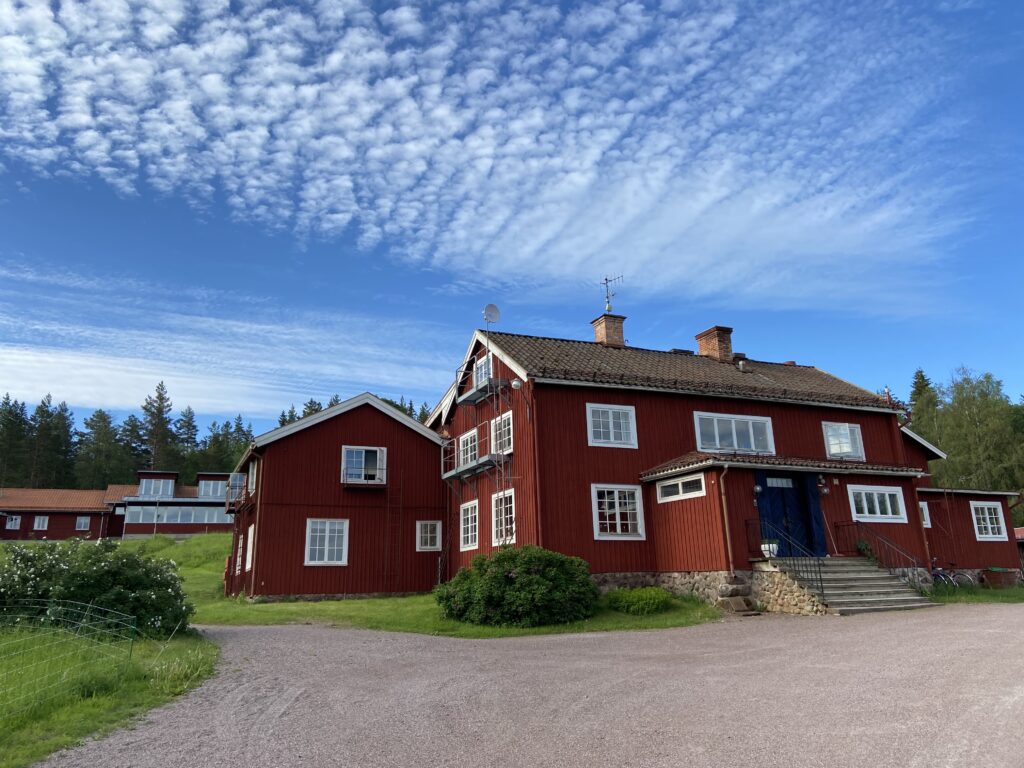
Beautiful Sätergläntan in Sweden
Editor’s Note: Today’s blog entry was written by Judy Larson.
“Nordic Handcraft Workshop: Weaving with History – Using Historical Textiles” was a class co-hosted by American Swedish Institute (ASI) and Weavers Guild of Minnesota (WGM) and planned to be taught by Susanna Ayton of Sätergläntan Institute for Craft and Handwork in Insjön, Dalarna, Sweden. Enrollment filled quickly, and five members of the Scandinavian Weavers Interest Group offered to wind warps and prepare the twelve looms. Betsy Konop, the WGM Education Coordinator, ordered the materials and assigned the warps for winding.
On Tuesday, June 20, the warps were delivered, and five of the looms got the warps wound on. Each loom had to be carefully warped using 6/1 linen, 6/3 linen, 6/1 wool, and 16/2 cottons. The next day, more warps were wound on, sleying started, and the process continued. That night, we were informed that the instructor had been called back to Sweden for a family emergency, and we could choose to continue with the class as a group study or get a full refund. Betsy said she was sure we could “make lemonade out of these lemons!” Besides, the looms were almost ready!
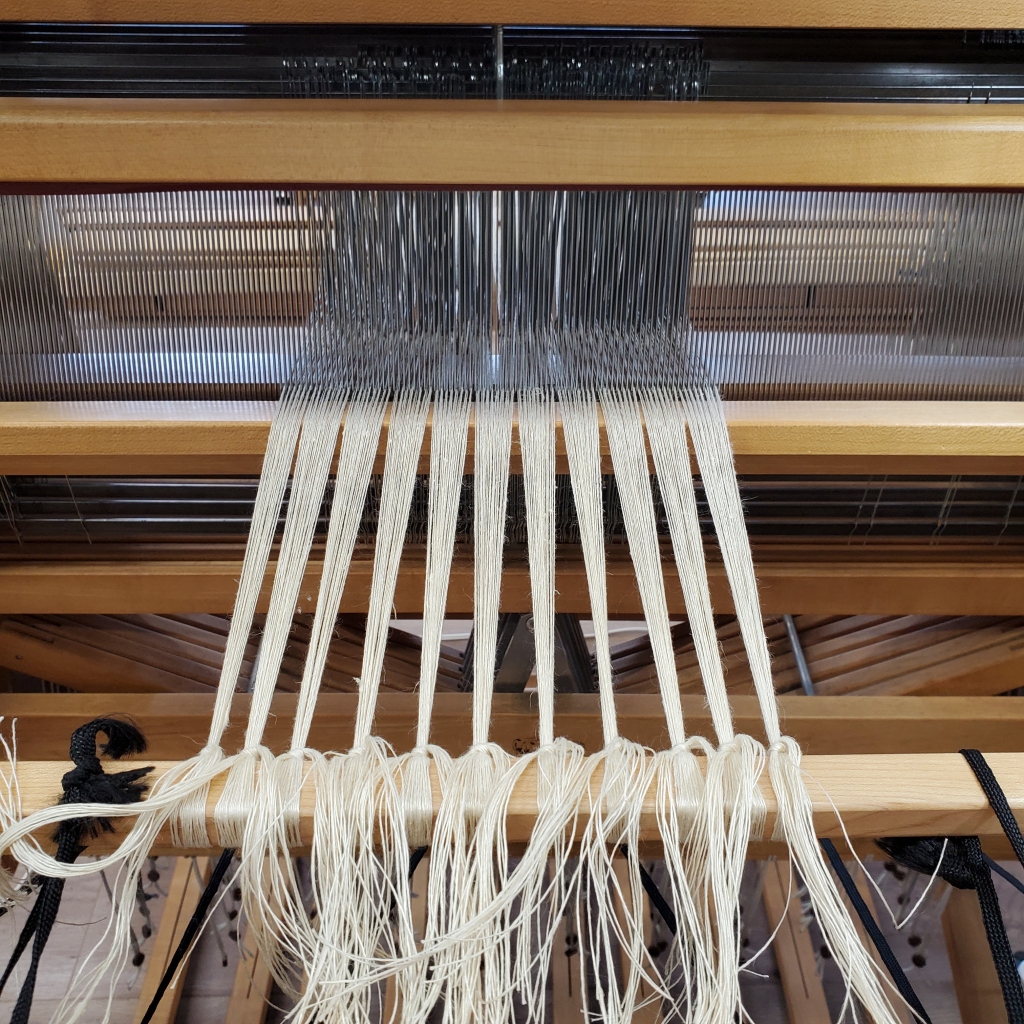
Loom warped in beautiful Swedish linen
Ten of the twelve students chose to still do the class as a group study, and so the warping continued. It looked like everything was ready! Just before leaving on Thursday night, I noticed that one of the 6/1 linen warps had “churros” between the reed and the back beam, so it had to be completely wound to the the front beam, all the way to the end, and the twists removed. Betsy’s dog, Hopsy, was patiently waiting to go home, and he sat toward the end of the warp as the twist was slowly worked back. The decision was made to make it to Hopsy’s ears, and then cut the warp! It was then tied to the back beam and re-beamed the next day.

Hops hard at work! (Note his magnificent ears)
Friday morning, the group met at ASI and had a quick introduction to Sätergläntan’s programs in weaving, woodworking, blacksmithing, and hand sewing.

American Swedish Institute in Minneapolis
Then Phyllis Waggoner shared information and showed textiles from ASI’s collection in each of the weave structures we’d be sampling. Phyllis has been working with the ASI textiles for many years and is our local expert!
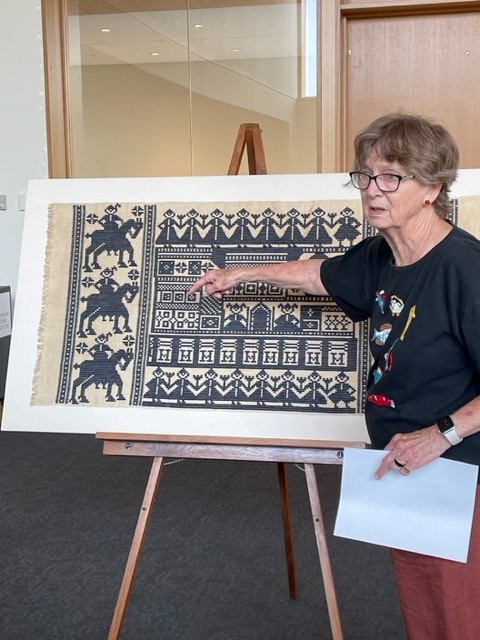
Phyllis explaining Blådrättar, a style of Dukagång
We first saw the Dukagång and Blådrättar. Blådrättar means “blue dish” in Swedish and refers to the fact that this type of Dukagång was traditionally done in blue and white/cream, similar to the colors on porcelain dishes. In Dukagång, the wool pattern weft is laid in fine rows separated by thin lines of tabby wefts.
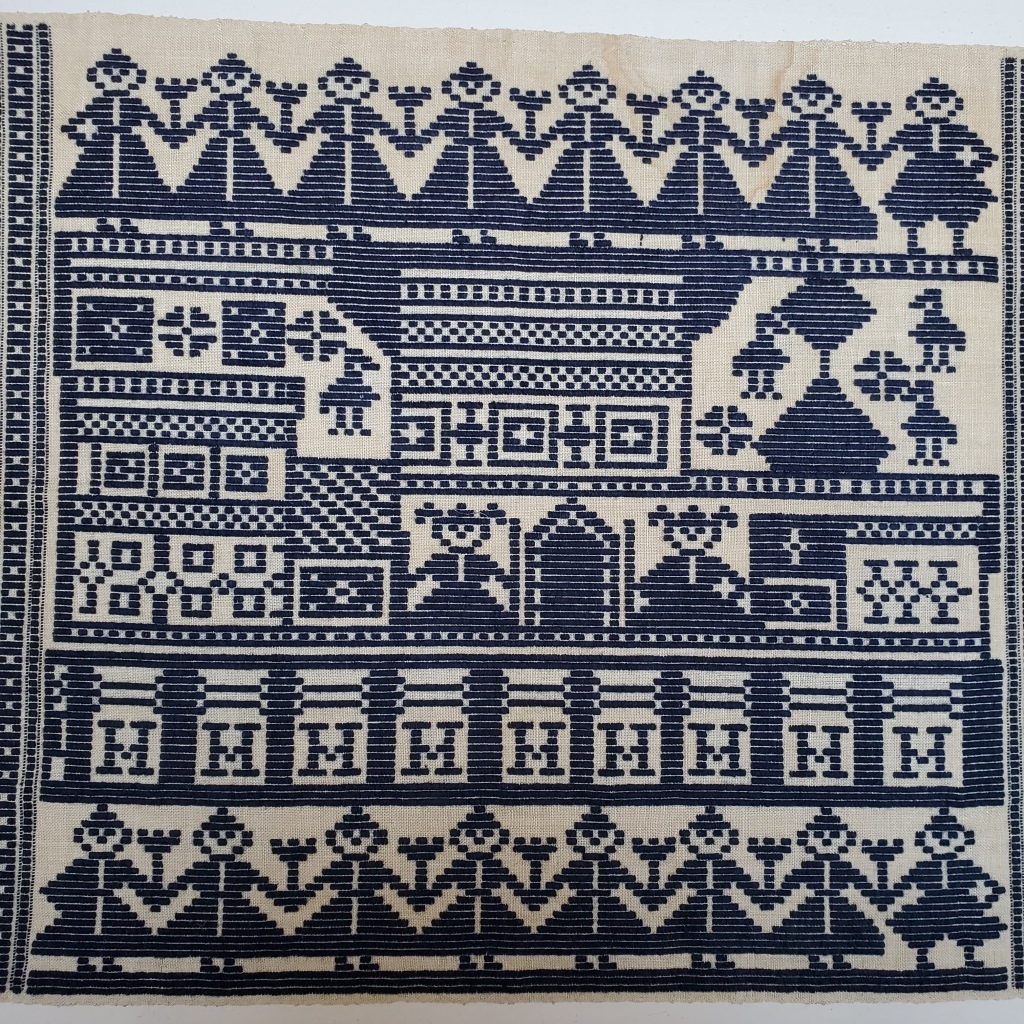
Close-up of Blådrättar from ASI collection
Rölakan and munkabälte (Monksbelt) pieces were shown next, along with Daldräll (Overshot) and Rosengång (Rosepath).
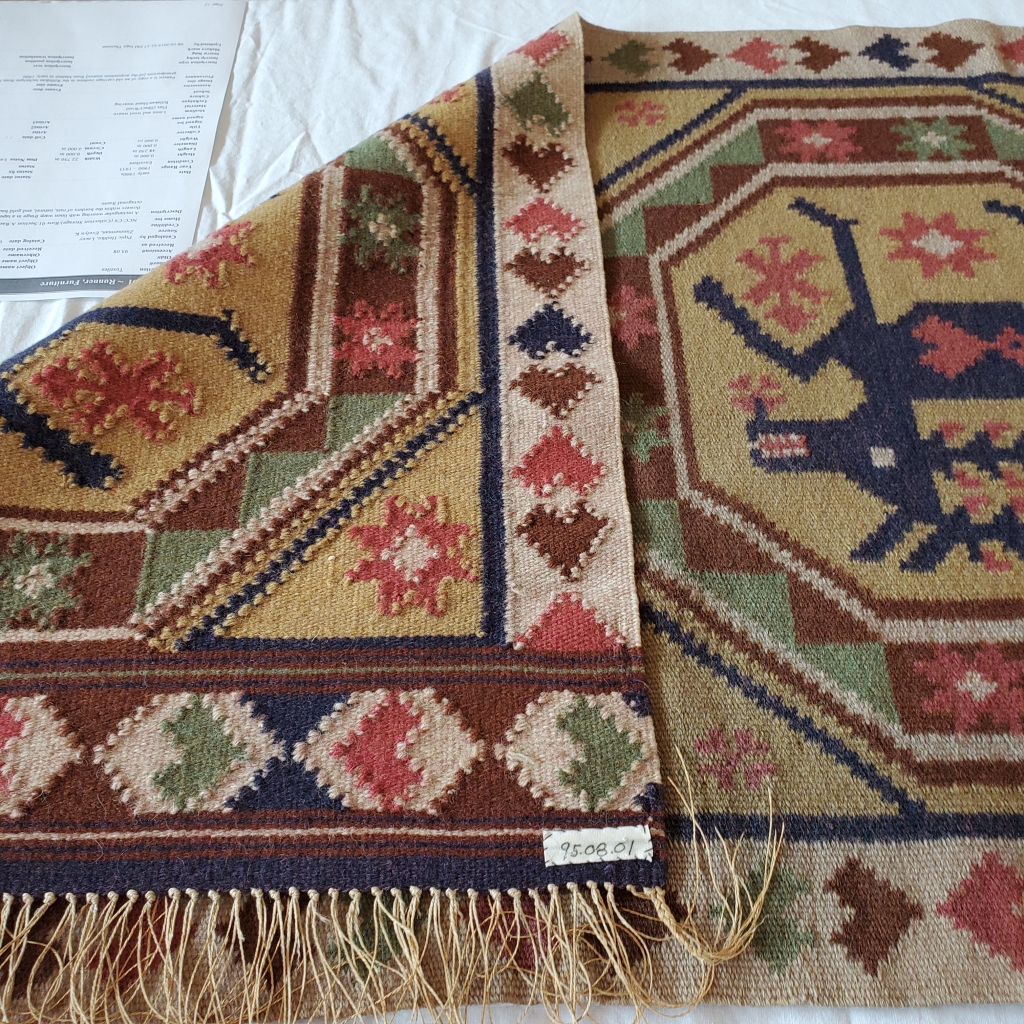
Close-up of Rölakan showing distinctive interlock technique
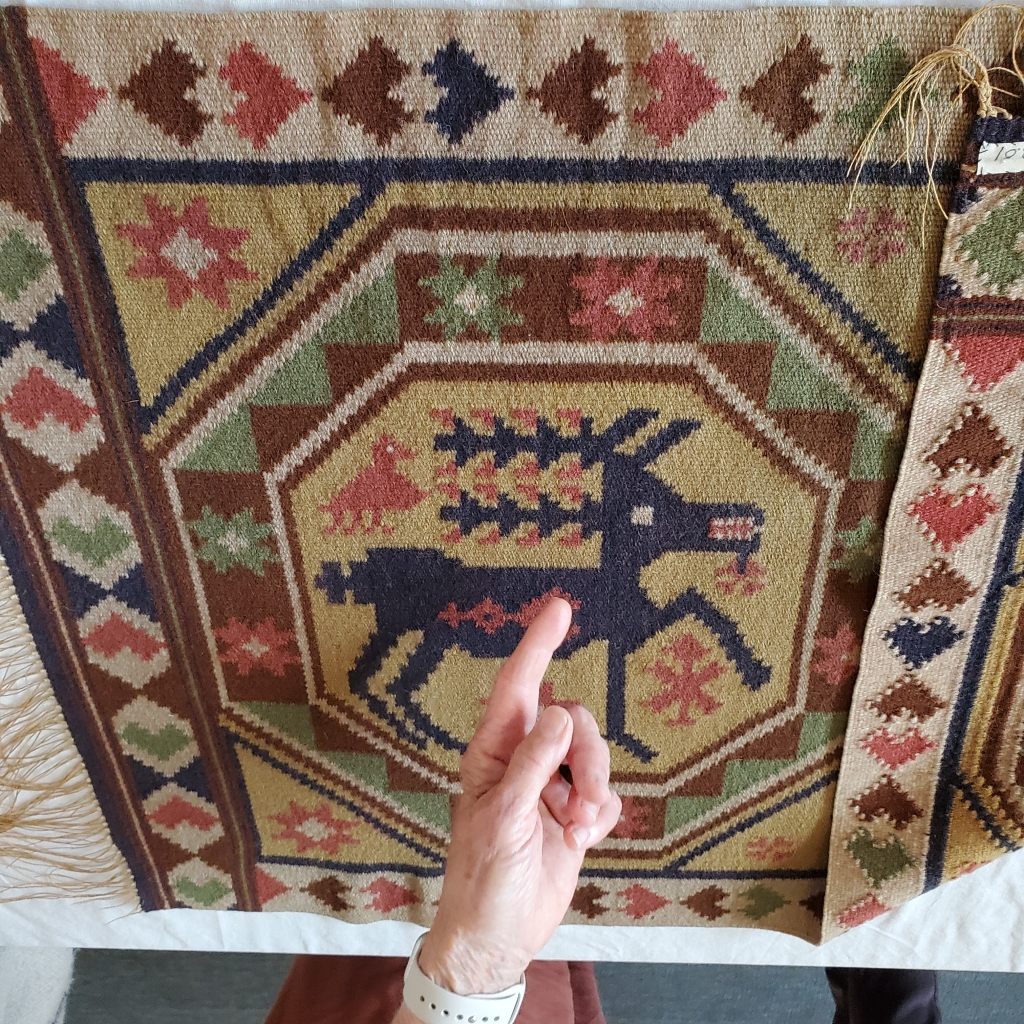
Close-up of mythical creature on Rölakan weaving
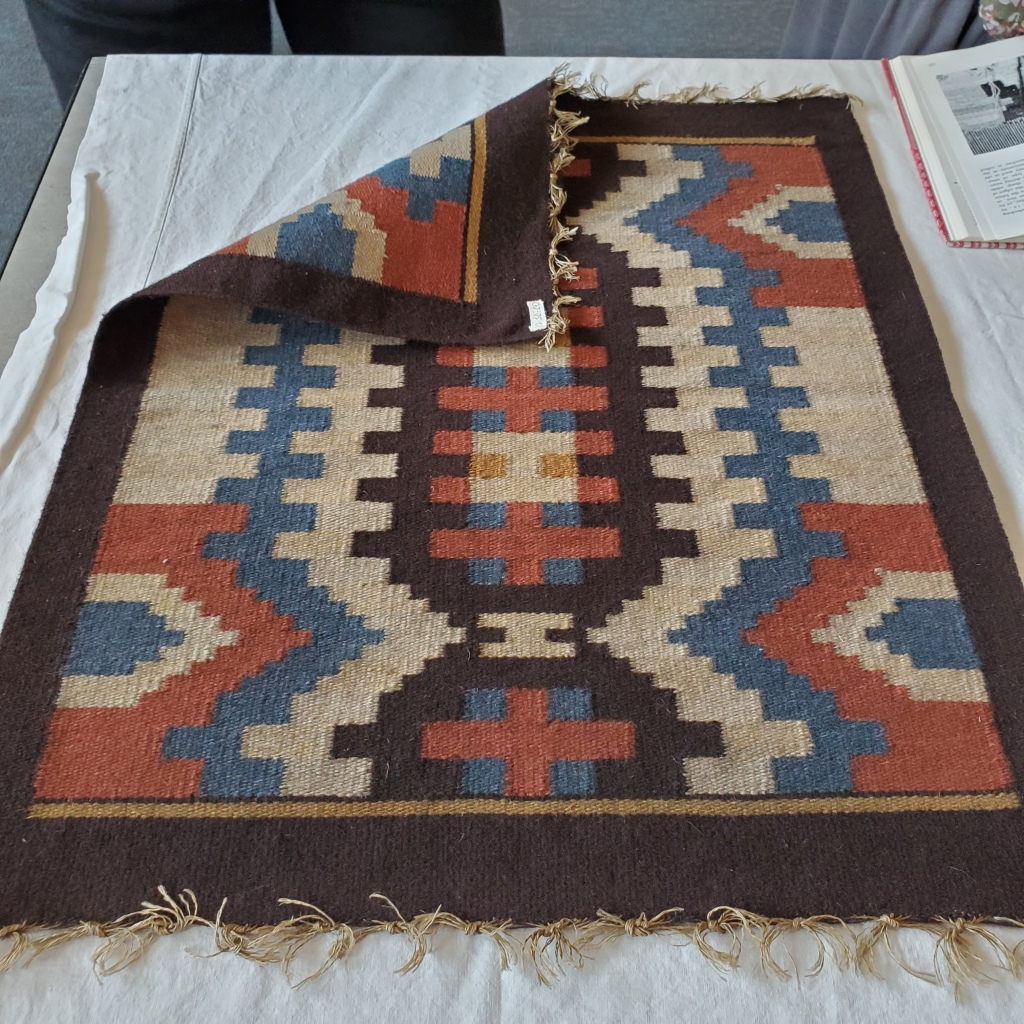
Another Rölakan from ASI’s textile collection
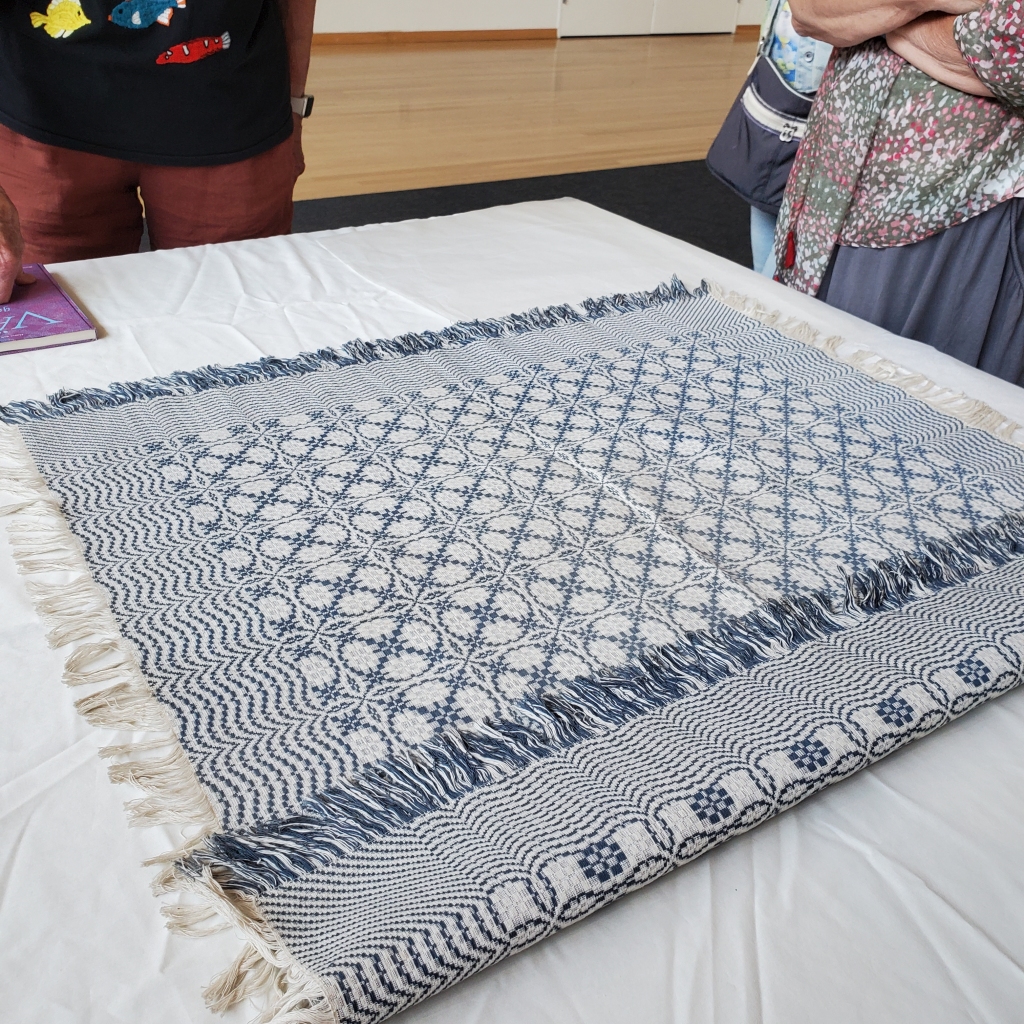
Daldräll from ASI’s textile collection
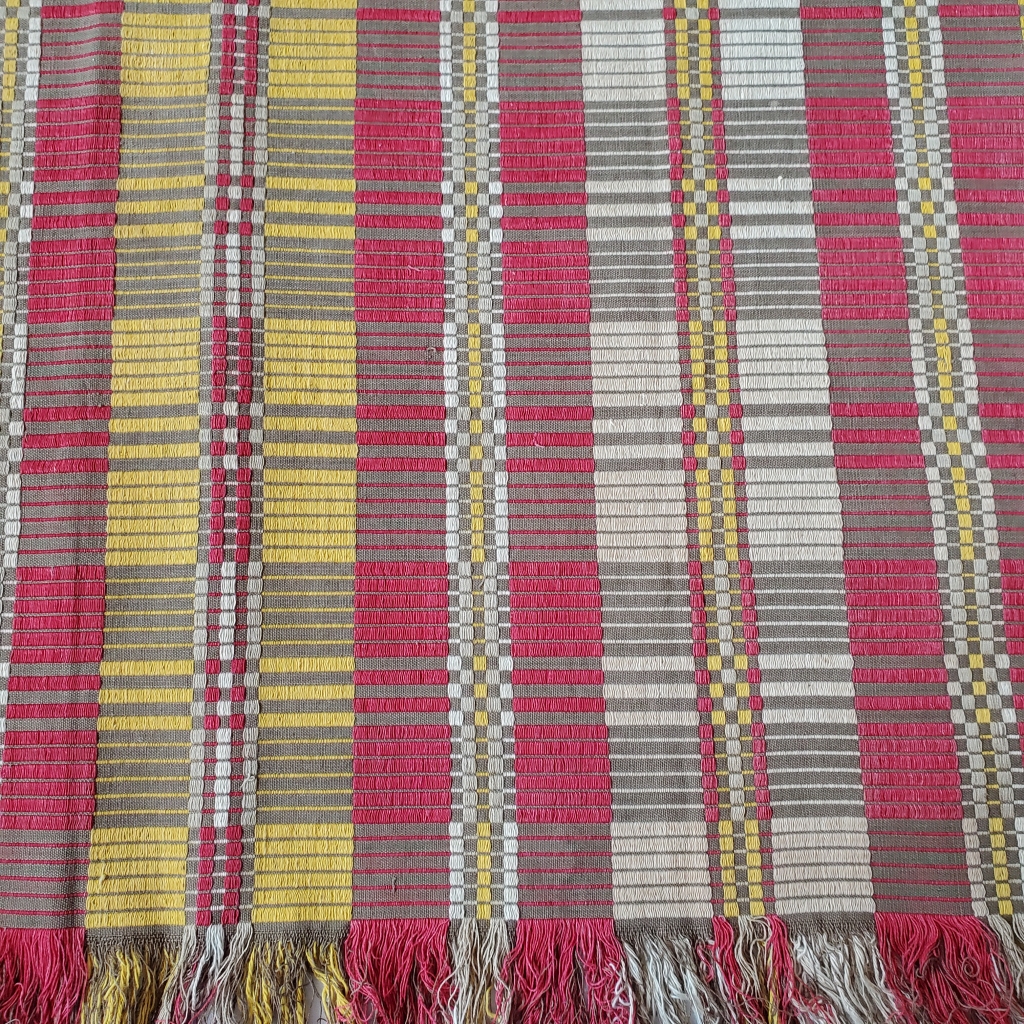
Munkabälte (Monksbelt) from ASI collection
After lunch, the group went to the Guild and started our group study. Those with any experience in any of the structures gave their mini-demonstration, and then the weavers began making their samples.
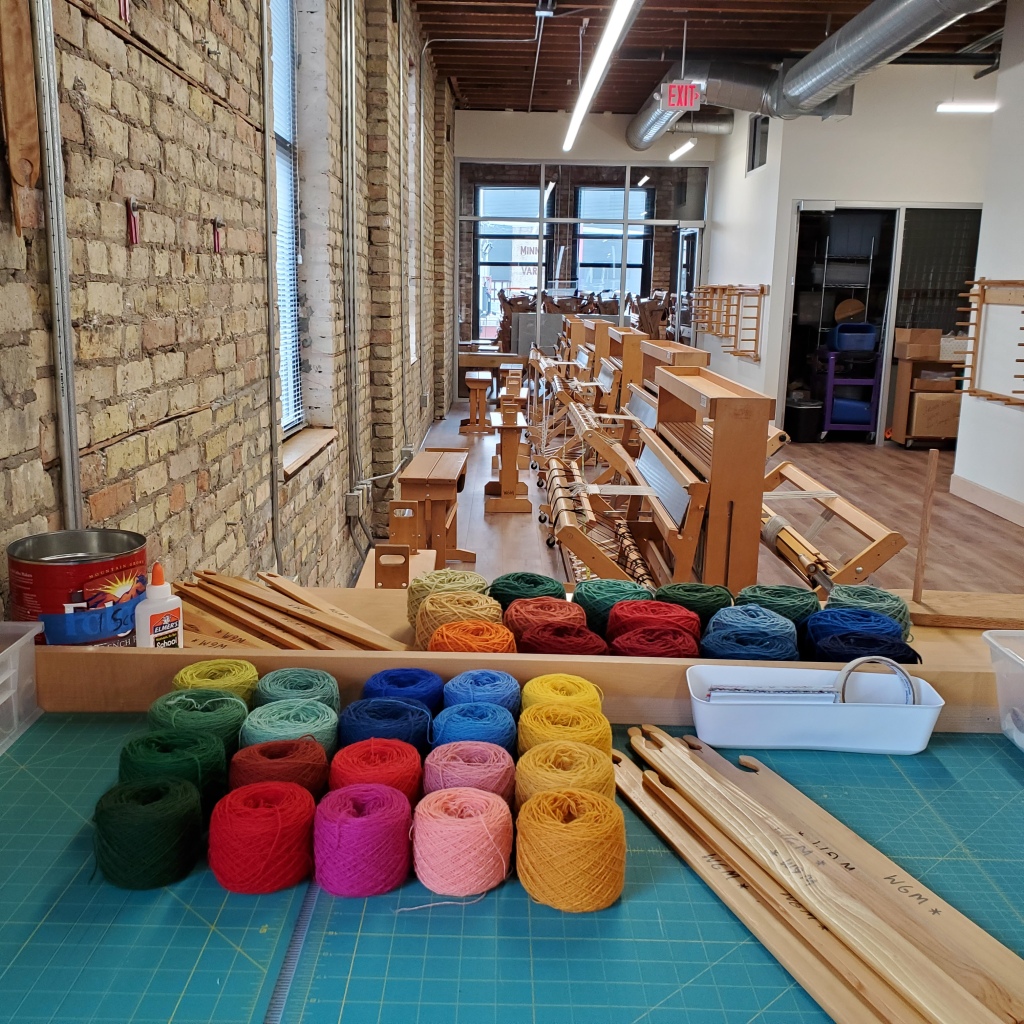
Swedish wool yarn with WGM looms in the background
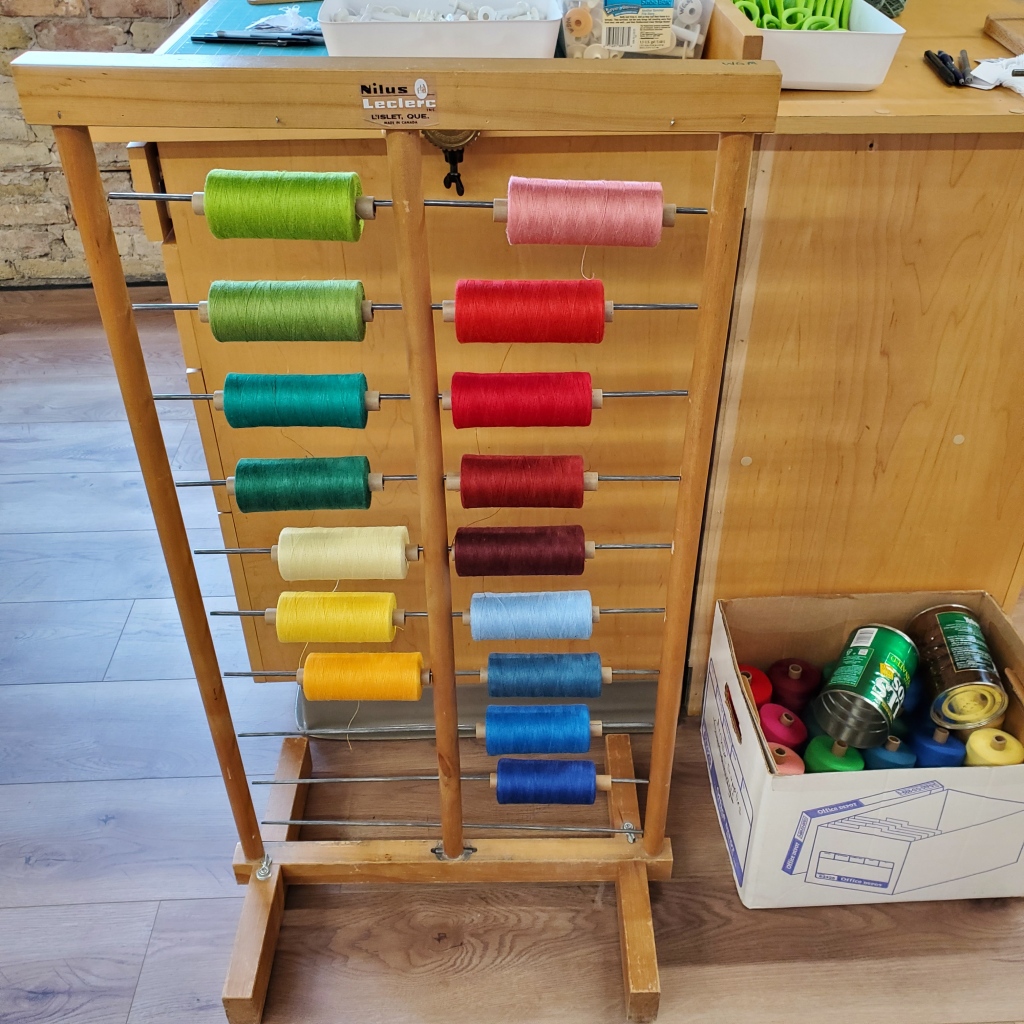
Lovely Swedish linen in a rainbow of colors!
Munkabälte and Daldräll were both pattern/tabby weaves and were more familiar. The Rosengång on opposites was a little trickier to do, but remembering the treadle partners of 1/4 with 2/3 and 1/2 with 3/4 helped. The Rölakan differences with single or double interlocks, plus the dovetail and over two without interlocked were discussed. The most challenging weave was the Dukagång.
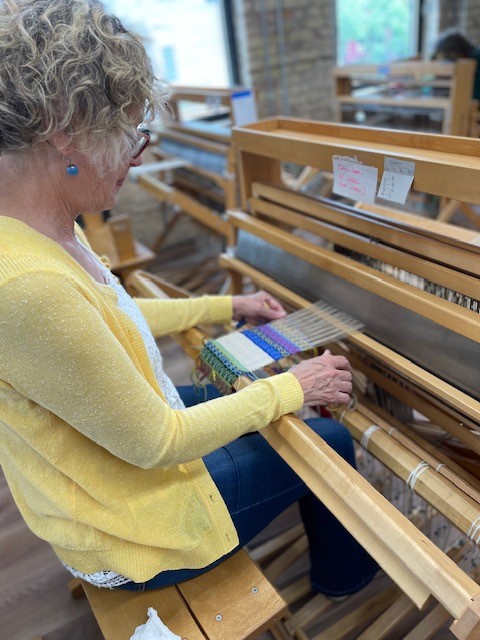
Marianne weaving Rosengång (Rosepath)
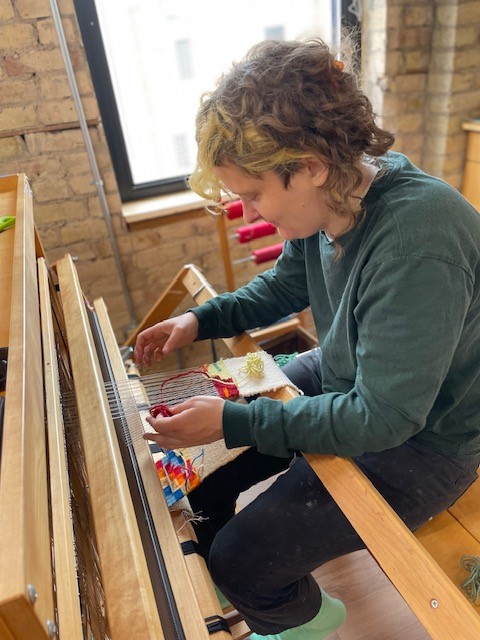
Ever working on Rölakan interlocks
The weavers wove 6-inch samples of three different Munkabälte patterns, two Rosengångs (one with twills 4321234, and one with 123414321 threadings), two Daldräll patterns, two Rölakan, and three Dukagångs. As the weaving started, the patterns were coming out underneath. The tie-ups were all for counterbalance looms, so the tie ups needed to be reversed! More learning was happening!
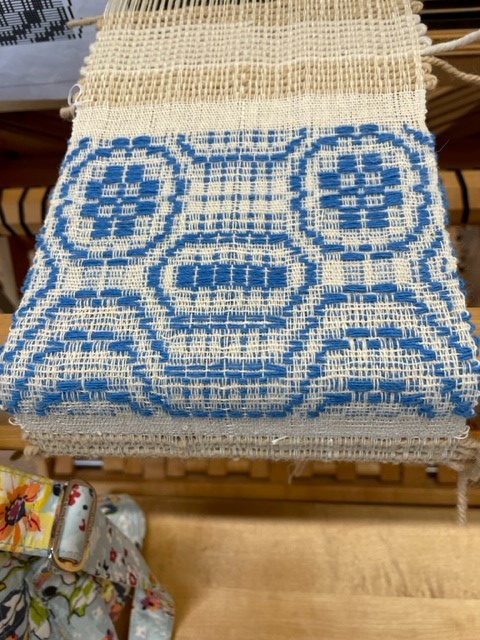
Daldräll by Judy
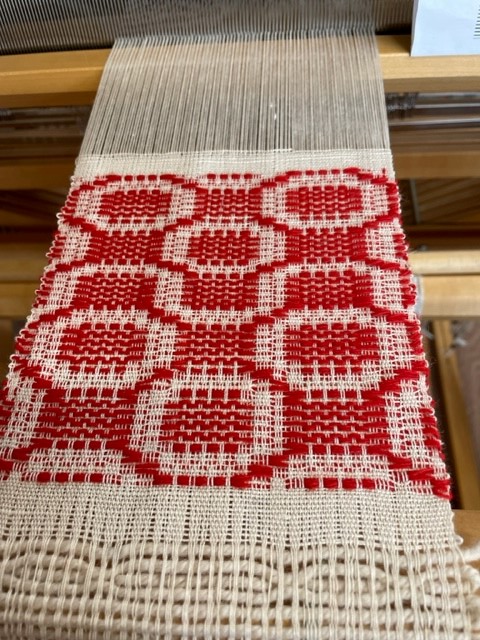
Second Daldräll threading
Two of the Dukagångs were on 6/1 Farö wool warps, which kept breaking. Finally, the decision was made to re-warp one of them with 6/1 linen, which worked much better.
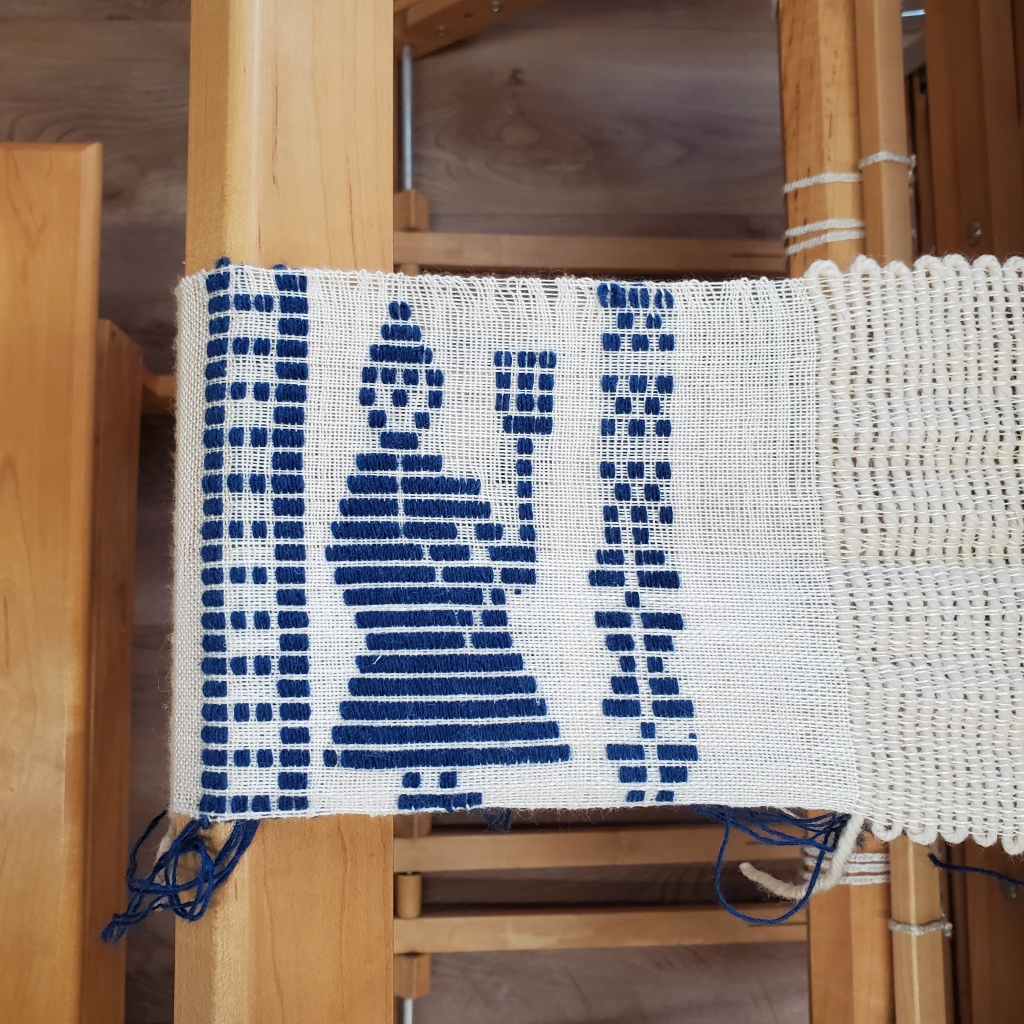
Sharon’s beautiful Blådrättar!
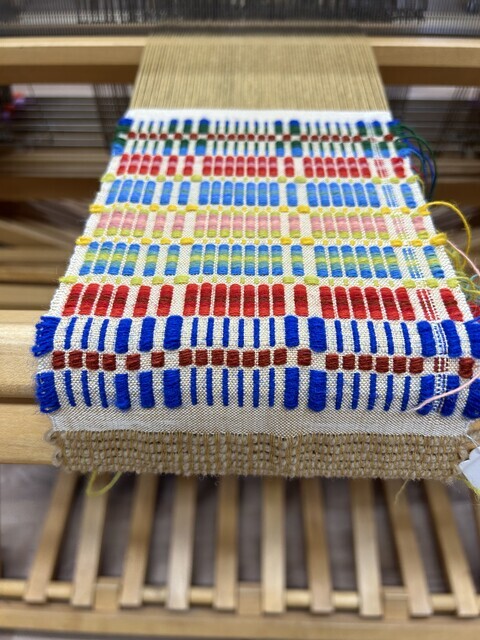
Sharon experimented with color blending in munkabälte

Close-up of Sharon’s munkabälte
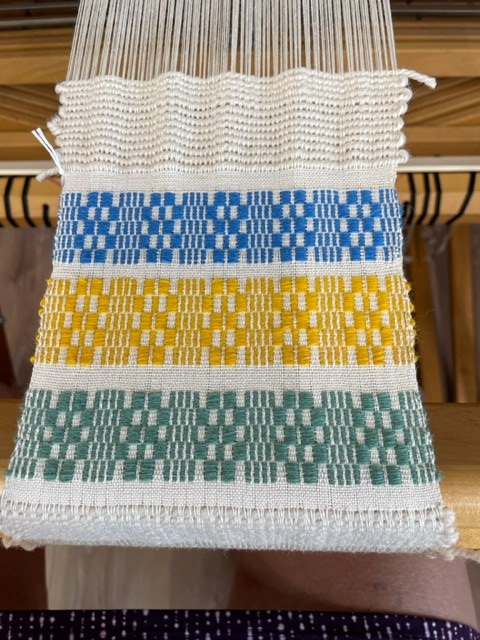
More munkabälte
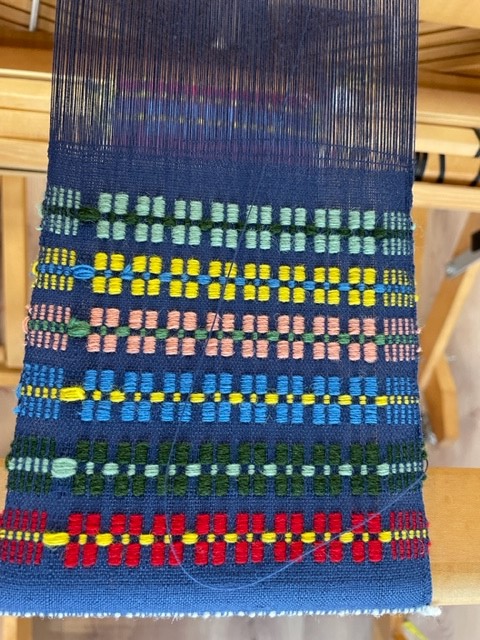
Munkabälte
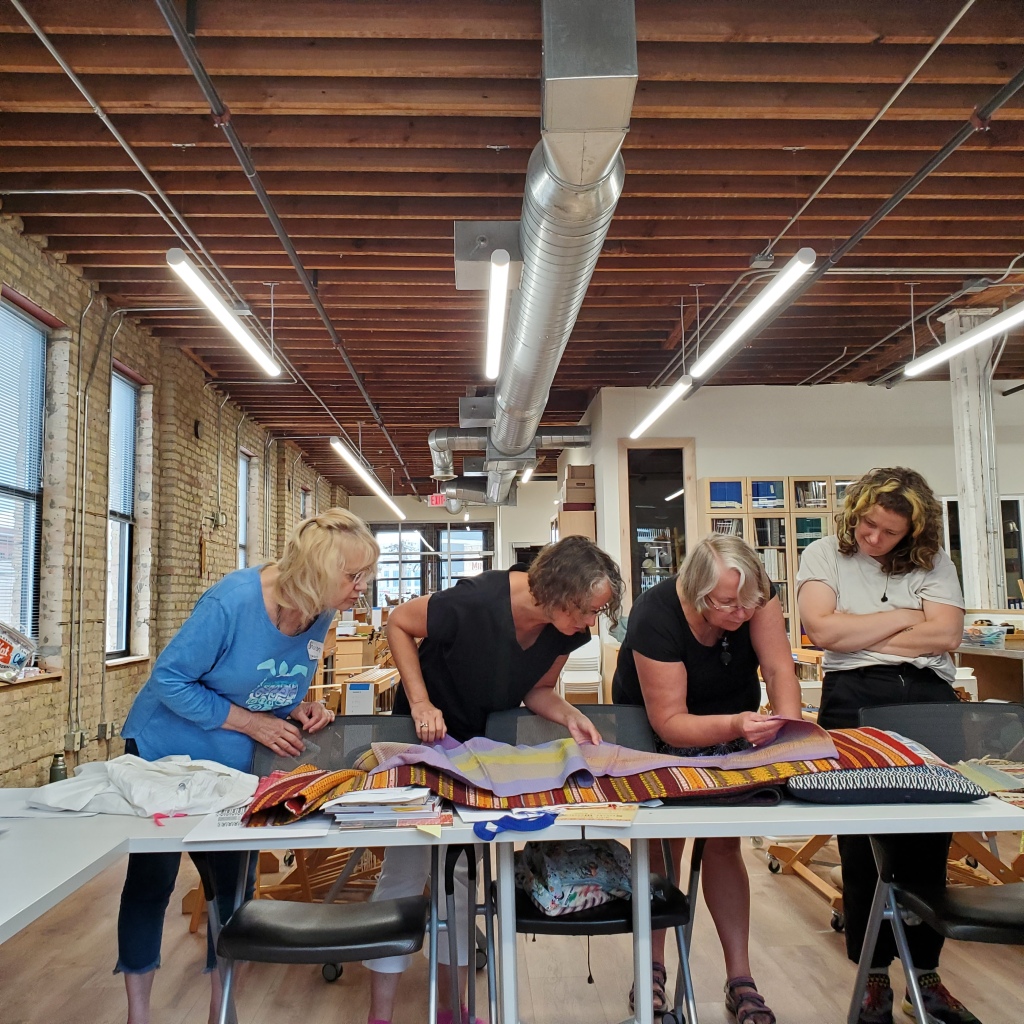
Analyzing weave structure’s in Nancy’s show-and-tell
After weaving on Saturday and Sunday, there was a reception at ASI for all the participants in any of the four areas for Sätergläntan classes. The blacksmithing teacher commented that it was impressive that the weaving class went forward, even without a teacher. But it just shows that when weavers get a chance, they make the best of it! We truly did make “lemonade out of the lemons!”
After the warps are taken off the looms, Betsy will take pictures of each sample, and send them out to their respective weavers. The weekend was a great opportunity to meet more weavers, learn more about Swedish structures, and support the Guild/ASI partnership with Sätergläntan. Thank you to everyone who made this possible!
Editor’s Note: Special thanks to Betsy and Judy (and Hopsy!) as well as Erin Swenson-Klatt at ASI, who all went above and beyond to make sure this week was a wonderful experience for all!
Websites:
Sätergläntan: saterglantan.se
American Swedish Institute (ASI): asimn.org
Weavers Guild of Minnesota: weaversguildmn.org